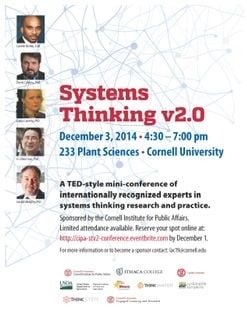Coronavirus- an evolving guide
Coronavirus and Covid-19 is an emerging phenomena and we are distinguishing exactly what it is and its effects on an evolving basis. Cutting through the noise and finding some signal is critical, especially in the face of heated politics on the issue.
The MOST important thing we can do is to listen not to the politicians and social media, but to the facts, data, and science.
The other important thing we must do is to [use translational research and design techniques to] make this science, fact, and data accessible to the general public. A dry chart that people do not understand won't do.
These two things, simple explanations with fidelity to the science, is a big part of what our lab has done for systems thinking. I will be posting good information and data as I find it, here. Please send me items you think are reliable and I'll include them...
Understand Coronavirus as a System
Perhaps the most important systemic analysis of Coronavirus. It explains why we need to be aggressive and proactive and work together.
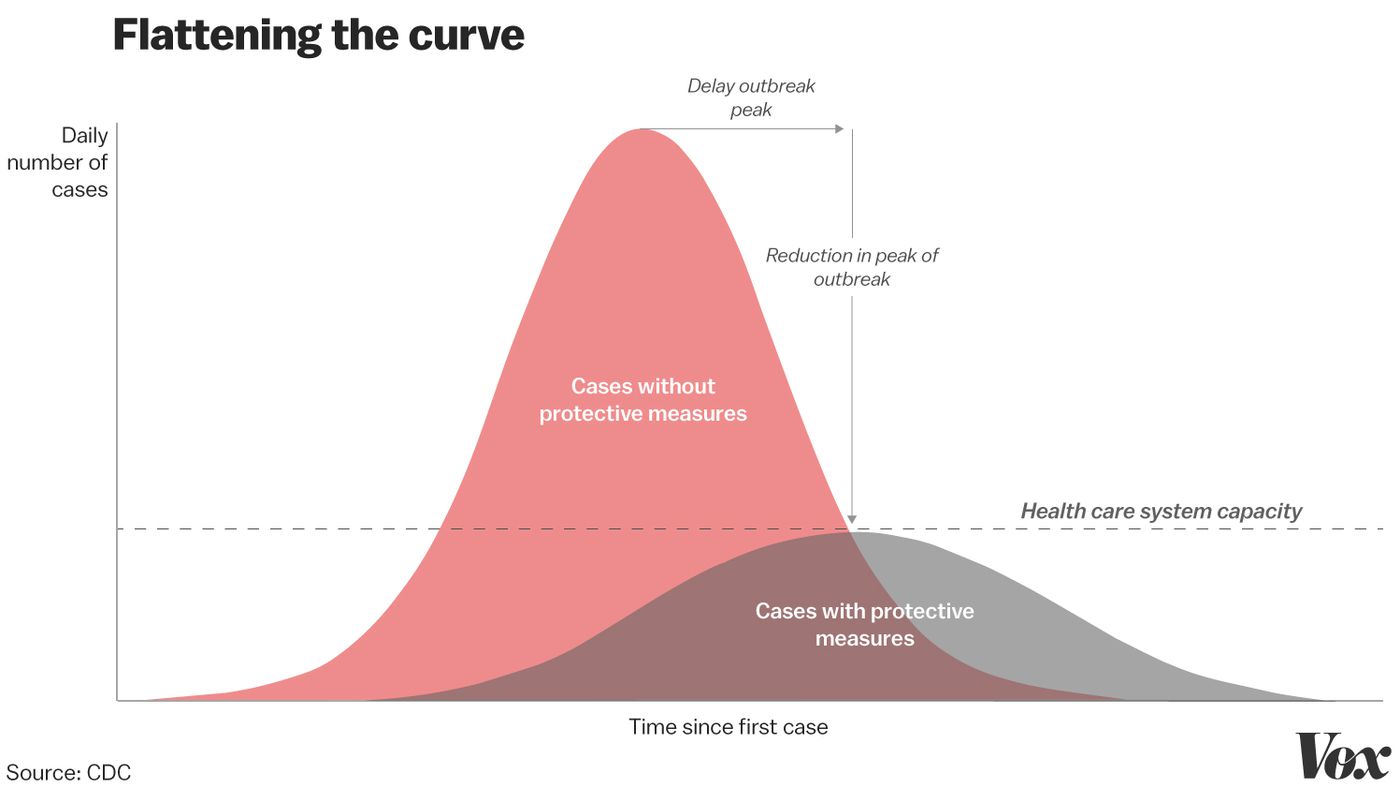
Another way of understanding the growth pattern of Coronavirus is the following anecdote. There is a weed that doubles in its coverage every day. In 30 days it covers an entire field. How many days will it take for the weed to cover half the field? The answer sometimes evades people. It's 29 days. Because at 29 days the field is half covered. The next day it doubles to cover an entire field. Of course, on the 31st day there are two fields...and so on. What looks like slow growth early on becomes exponential.
Listen to the Scientists, Data, Facts
Listen to the scientists, data, and facts.
Ignore the politicians and social media and pay attention to folks like Dr. Fauci. CDC.gov and Coronavirus.gov are, according to him, good sources of data (although its unclear how much political influence there is at those sites so I would continue to listen to actual scientists like Dr. Fauci...in other words, always consider the source)
Consult the science of why and how things work
Palli Thordarson, a chemist on twitter, breaks down (no pun intended) why bar soap and hand washing is actually better than hand sanitizer...Read all 18 of his tweets.
1/18 A soap is a soap is a soap! I am still flabbergasted by your response to my Twitter thread about the #COVID19 Coronavirus, soap and supramolecular chemistry! I have been quite busy today but I in this thread I will try to provide answers to some of your questions: pic.twitter.com/re56GDmvIG
— Palli Thordarson (@PalliThordarson) March 9, 2020
Have some fun with it
Have some fun with it, but stick to the facts, science, and evidence. That's what translational research is all about—simplification without losing fidelity. Here are some examples in Italy and Vietnam that make these ideas accessible.
And, as this grandma in Italy says, that which science and medicine can't solve humanity can. A little empathy goes a long way. We are all in this together. By combining some messages with humor (i.e., making it "sticky"), the message gets out more effectively.These are effective ways of getting the word out.
I used this "Cattening the Curve" with my kids to help them understand and remember why it is all of these "scary" things are occurring. It really is preventative so that we don't overwhelm the healthcare capacity which can lead to higher death rates. We want to be a lazy kitty not an alert kitty.
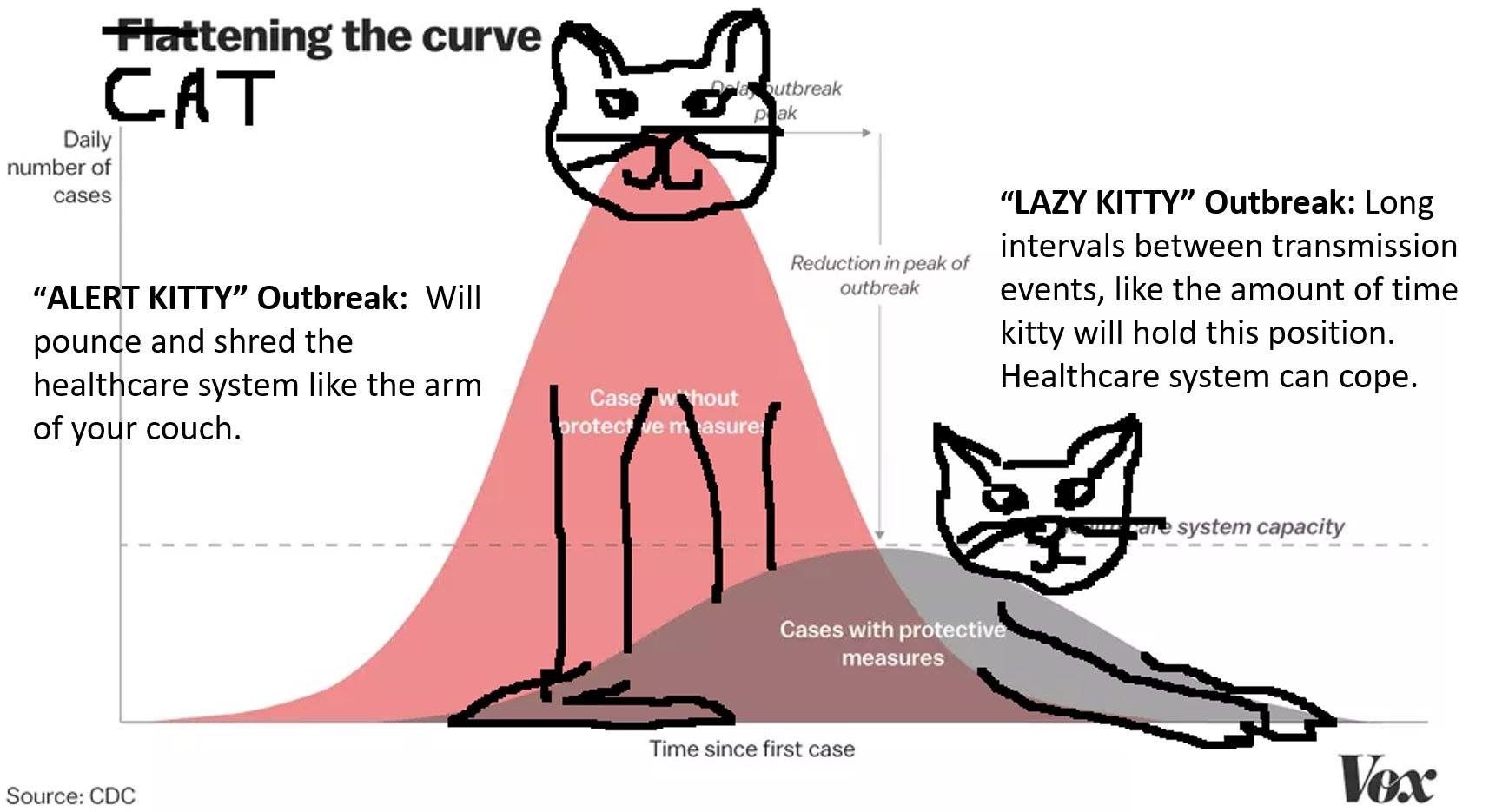


Another take on flattening the curve.
Our #FlattenTheCurve graphic is now up on @Wikipedia with proper attribution & a CC-BY-SA licence. Please share far & wide and translate it into any language you can! Details in the thread below. #Covid_19 #COVID2019 #COVID19 #coronavirus Thanks to @XTOTL & @TheSpinoffTV pic.twitter.com/BQop7yWu1Q
— Dr Siouxsie Wiles (@SiouxsieW) March 10, 2020
Another great website with a funny name: https://staythefuckhome.com/
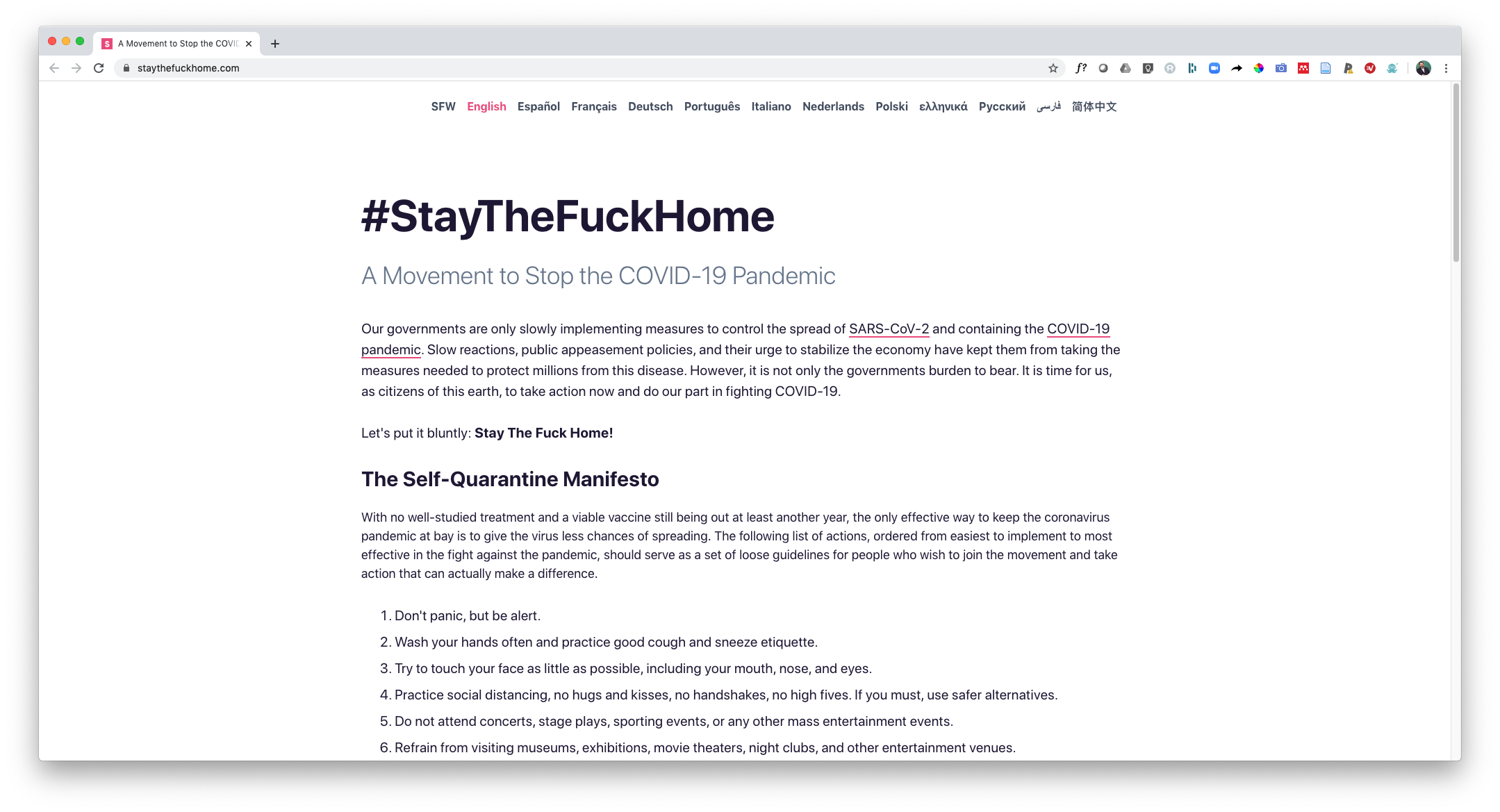
We are all interconnected and in this together
Realize that we are all in this together. It is not only about you. If you're young and likely not going to be seriously effected if you contract COVID-19, remember that you and others have grandparents and loved ones and your behavior effects them. We are all interconnected.

Again, this graphic is worth a 1000 or more words. It shows why it is so important for us to understand Coronavirus as a system and to act as part of a systemic effort. We can't flatten it alone.
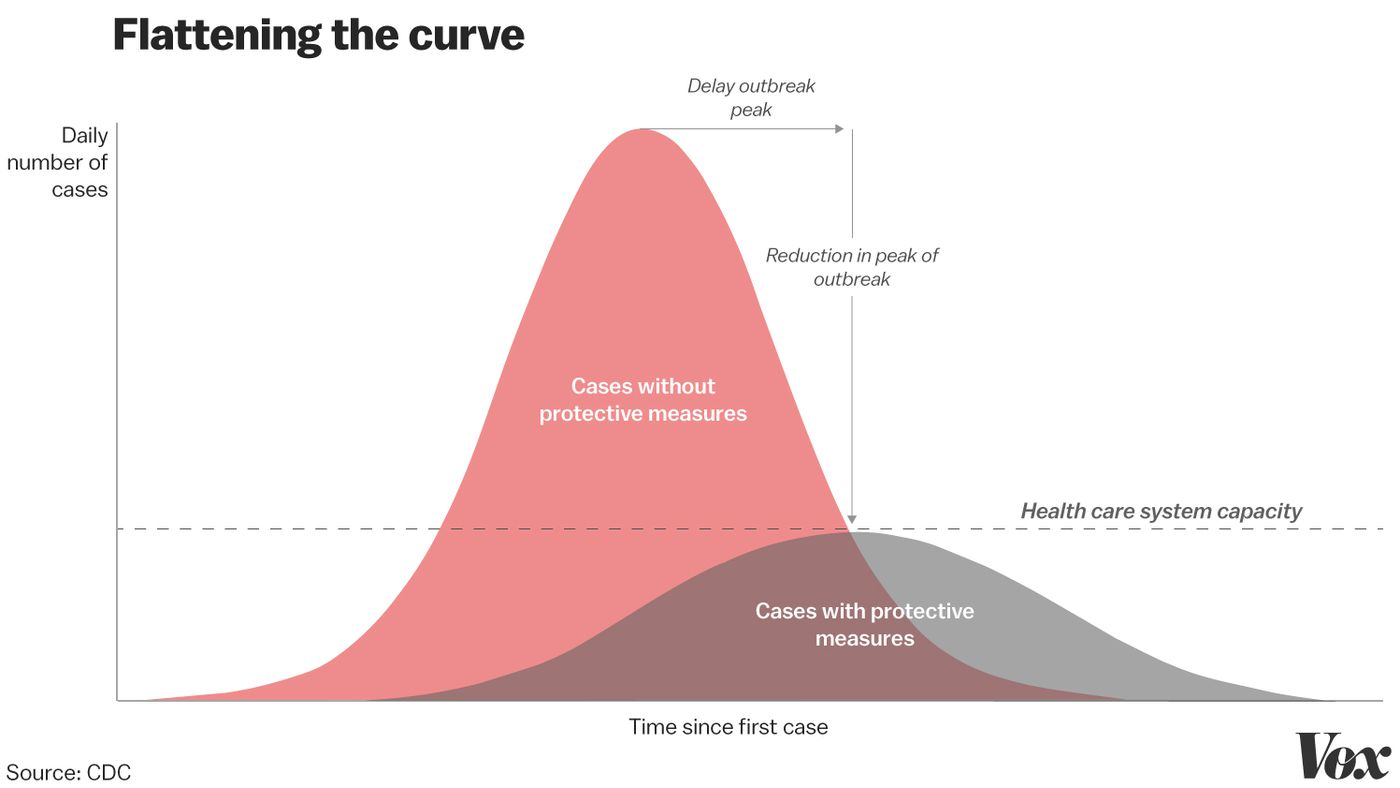
Kaila Colbin said it well in her tweet:
Here is the thing to understand about flattening the curve.
— Kaila Colbin (@kcolbin) March 12, 2020
It only works if we take necessary measures before they seem necessary.
And if it works, people will think we over-reacted.
We have to be willing to look like we over-reacted.
Read data more and opinion less
This interactive data tool is an excellent example of what aggressive action now can achieve. https://nyti.ms/2wSDnro
This interactive tool from the Washington Post is also good: https://www.washingtonpost.com/graphics/2020/world/corona-simulator/
Here's some facts from source at top:
The bullets provided below are from the sources below:
- Mark Denison, MD, Chair of Infectious Diseases - Vanderbilt University
- Hana Hakim, MD, St. Jude Children’s Research Hospital
- Janet England, MD, University of Washington School of Medicine
- Joshua Wolf, PhD, Infectious Diseases, St. Jude Children’s Research Hospital
- Miguela Cantina, MD, Director or Global Infectious Diseases, St. Jude Children’s Research Hospital
- Michael Osterholm, PhD, University of Michigan, Director of Infectious Diseases, Center for Disease Control and Prevention, John Hopkins School of Medicine
The most common misconception discounting the gravity of the potential pandemic is the comparison between the seasonal flu and COVID-19. People are citing the fact that most people affected with the novel corona virus will experience only mild symptoms (that is true, no knowledgeable person is saying that if you get the corona virus you’re going to die), that the mortality rate is only 1% (true but that statistic, on its own, is misleading in regard to the potential severity of the spread of the virus) and that “if you don’t freak out because of the seasonal flu, you shouldn’t freak out about this” (I’m not even really sure what that means).
These are the facts:
- There are MANY different strains of the Corona virus of which we’ve been aware for a long time. (Just because the back of the Clorox container says “human corona virus” doesn’t mean that COVID-19 isn’t new)
- COVID-19 has never existed in humans before now; therefore, we have NO existing immunity to this virus.
- There are currently no vaccines or antiviral treatments available for slowing COVID-19 spread although there are some that are currently beginning clinical trials.
- The notion that this virus could have been man-made is nonsense.
- The average incubation period for COVID-19 is 5 days and can extend up to 21 days. The incubation period for the seasonal flu is about two days. This means, that in the case of COVID-19, you could contract the virus and become contagious long before you become symptomatic and have the opportunity to take measures against spreading the disease with whom you interact.
- The belief that COVID-19 is spread ONLY through close contact with the infected is FALSE. Transmission is the novel virus can occur through the air and occurs after extended periods of exposure within 6 feet of an individual that is infected.
- Wearing traditional ear-loop masks might lower the risk of you infecting someone else, but it won’t prevent you from being infected.
- The best approach to avoiding the impact the virus has on us is avoiding things that might promote its spread i.e avoiding large crowds and travel through places where the virus has been confirmed.
- As it stands, the COVID-19 mortality rate is roughly 1%. The seasonal flu is .1%. That is 10x less the mortality rate of the novel corona virus.
- COVID-19 is far more contagious than the seasonal flu. Estimated to be a little over twice as contagious.
- Death toll and mortality rates are different. Because of the differences in the rates that these viruses are spread, it is estimated that COVID-19 could be 20-30x more deadly than the WORST seasonal flu.
- There is no evidence that COVID-19 is seasonal. (Neither is the seasonal flu but it does migrate from hemisphere to hemisphere according to seasonal changes)
- Aside from the death toll, a very valid concern is the overwhelming of the US health care system that is not prepared to take on an epidemic of this magnitude. Other countries are already having to turn down symptomatic patients. There are roughly 327 million citizens in the US and roughly 900,000 hospital beds. Those aren’t available beds. That’s total beds.
And here's some other data.









Update as of 3-22-20:
This slideshow by Micheal Lin of the Lin Lab at Stanford University is a great overview of the entire coronavirus situation (including some information on why we should be calling it SARS-CoV-2). The slideshow is titled "How To Fight The Coronavirus, SARS-CoV-2, and its disease COVID-19." I highly recommend that you read through it, especially the recommendations at the end of the slideshow.

Update as of 3-23-20:
Many scientists and government agencies are desperately trying to predict exactly how fast and how severely Coronavirus will spread and effect the international community. Mathematical models are used in order to help them estimate the information they are searching for. One model has indicated that the number of cases will peak this month. This interactive article by the Washington Post looks at the Basic Reproductive Number of COVID-19 which is estimated to be ~2.3. The BRN is the measure of the rate a disease is able to spread through a susceptible population. The higher the BRN is, the faster an epidemic begins. Read the article to see how the Coronavirus compares to other diseases such as Measles and Ebola, and to see how preventative measures work within the model.
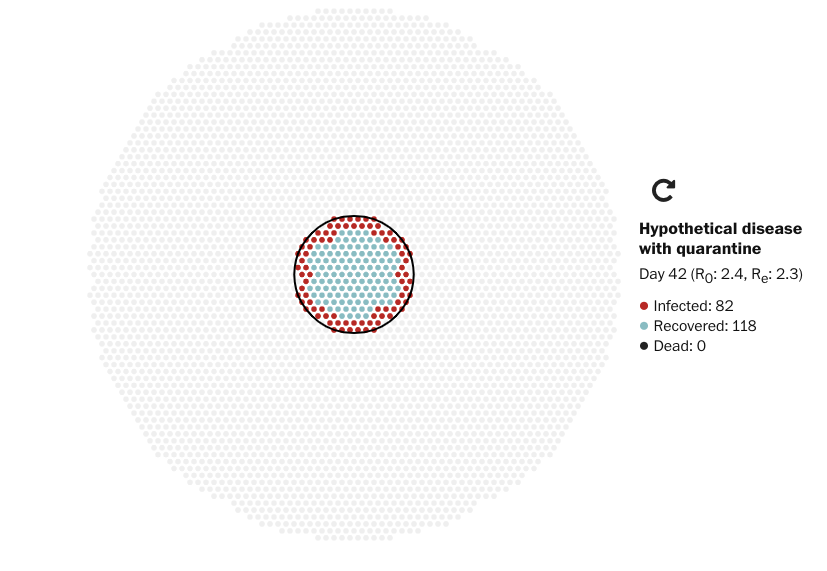
Update as of 3-27-20:
This article by the Ithaca Journal goes into detail about how long the Coronavirus lives on surfaces. Be careful when opening packages, and make sure to wipe down everything you can!
Update as of 4-4-20:
This interactive map from CNN shows and tracks in real time the Coronavirus cases in the United States.
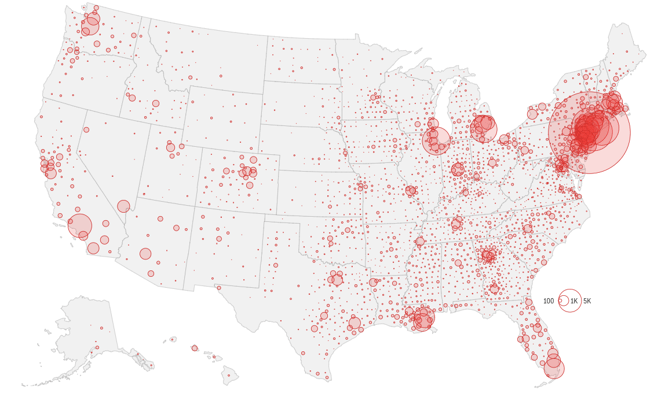
Update as of 4-5-20:
This interactive New York Times website not only has a map, but breaks down the numbers by state and county. It also tracks the rate of new cases and deaths.
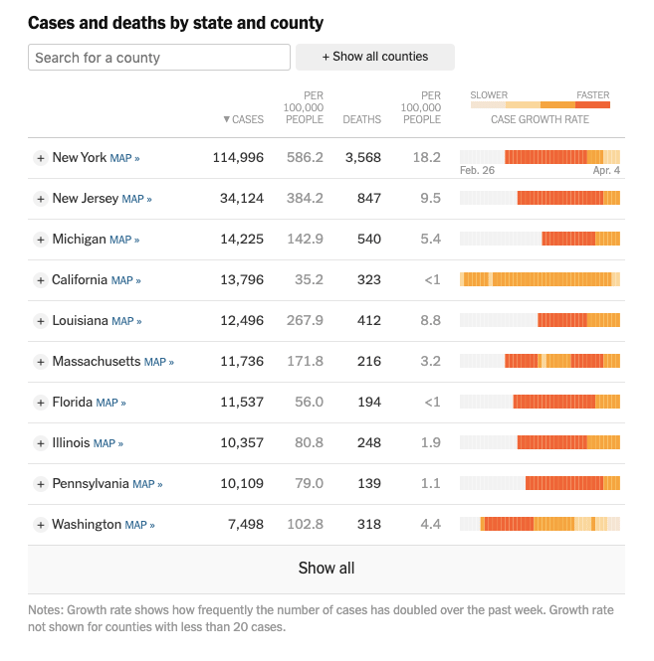
.png?width=150&height=150&name=CRL%20GOAT%20Logo%20(4).png)

